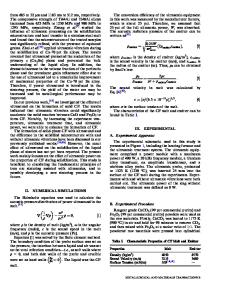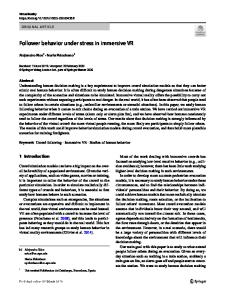Experimental Study of the Micromechanical Behavior of Ferrite in DP Steel Under Various Stress States
- PDF / 4,945,193 Bytes
- 13 Pages / 593.972 x 792 pts Page_size
- 22 Downloads / 305 Views
RODUCTION
FERRITE-MARTENSITE dual-phase (DP) steels are multiphase materials composed of soft ferrite and hard martensite that are widely used for their good mechanical properties and low manufacturing cost.[1–3] Generally, DP steels are produced by one of two approaches[4]; the first approach is to use a hot rolling method that obtains a two-phase structure of ferrite and martensite by controlling the final rolling temperature and cooling rate.[5,6] This method has clear advantages with regard to energy consumption and is suitable for producing thicker plates. The second approach is to use a cold rolling method, in which a two-phase structure is obtained by subjecting the rolled sheets to intercritical annealing.[5,7–9] During the annealing (typical heat treatment process illustrated in Figure 1), the steel sheets are first be heated to the ferrite and austenite YONGSHENG XU, WENJIAO DAN, and WEIGANG ZHANG are with the Department of Engineering Mechanics, School of Naval Architecture, Ocean and Civil Engineering, Shanghai Jiao Tong University, Shanghai 200240, China. Contact e-mail: [email protected] CHUANWEI LI is with the Institute of Materials Modification and Modeling, School of Materials Science and Engineering, Shanghai Jiao Tong University, Shanghai, 200240, China. Contact e-mail: [email protected] Manuscript submitted August 20, 2019.
METALLURGICAL AND MATERIALS TRANSACTIONS A
two-phase regions and then are soaked, followed by rapid cooling to promote the austenite-to-martensite transformation. This method exhibits a high production efficiency and is used in a wide range of applications. The phase transition is similar in both the hot rolling and the cold rolling process; that is, the martensite phase is obtained by rapid cooling. The crystal structure transformation (face-centered cubic (FCC) to body-centered tetragonal (BCT)) and supersaturated carbon atoms give rise to a decrease in the efficiency of space-filling of the martensite unit cell and a volume expansion of the phase transition region.[10,11] The volume expansion causes plastic deformation and initial hardening of the ferrite near the phase boundary; the hardening effect becomes more significant as the martensite volume fraction increases and the grain size decreases.[10] Various studies have shown that the residual deformation after annealing of ferrite makes the elastic limit and yield strength of DP steels much lower than those of the sample prior to quenching (quenching gives rise to residual stress and high-density movable dislocations in DP steels).[11] Tsipouridis et al.[12] noted that the average dislocation density of ferrite in DP steels was dependent on the volume fraction of martensite and that the high-density dislocation resulted in continuous yielding behavior of DP steels.[13,14] In summary, the dual-phase microstructure
and the initial hardening characteristics of ferrite determine the macroscopic mechanical behavior of DP steels. On the other hand, due to the huge difference in the mechanical properties of ferrite and martensite
Data Loading...











